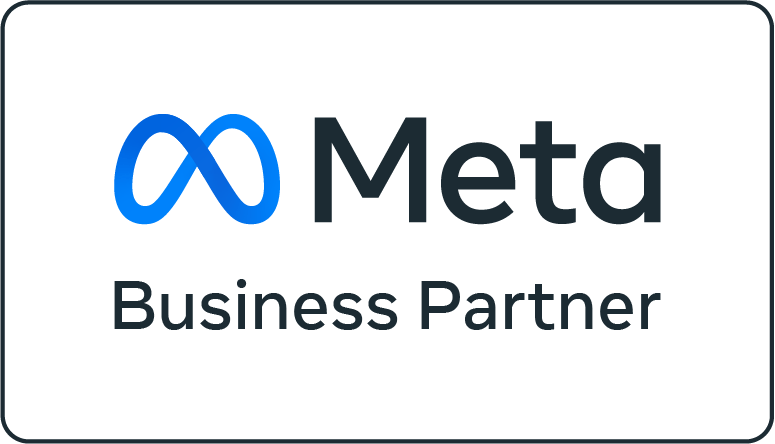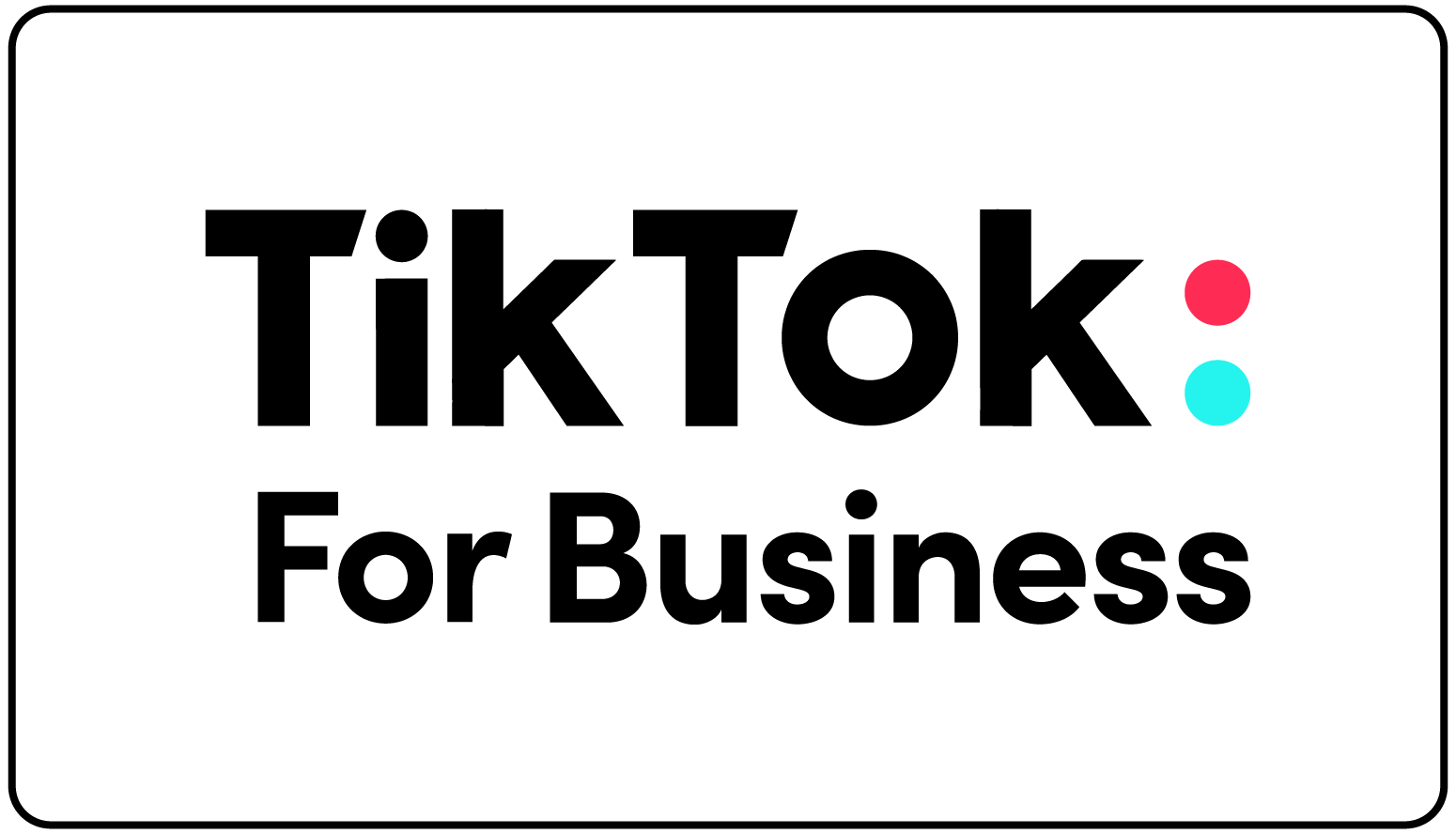Social Media Advertising
Paid social, also known as social media advertising is a digital marketing approach that leverages various social media platforms to deliver promotional content to specific audiences. This form of advertising can encompass different types of content, from text and image ads to video and interactive content.
The primary goal of social media advertising is to reach a larger audience, increase website traffic, generate leads, and ultimately convert these leads into customers. Not only can businesses target large audiences, but they can also tailor their advertisements based on demographics, user behavior, and personal preferences, making it a highly effective tool for targeted marketing.
What is the definition of paid social?
Paid social refers to the use of social media platforms to promote content to a selected audience in exchange for payment. Unlike organic social, where businesses rely on non-paid strategies to increase their visibility and reach, paid social involves strategies such as pay-per-click (PPC) advertising, sponsored posts, promoted tweets, promoted Stories, and video ads.
The platforms are generally self-serve and offer advanced targeting options, the ability to upload creative assets and track results, enabling advertisers to reach specific audiences based on demographics, interests, behaviors, and more. This precision helps ensure that your content reaches users who are most likely to engage with it and take desired actions. In the early days of Facebook Ads, this precision was achieved via manually targeting niche audiences; in 2023 the best results for digital advertising are increasingly driven through AI and machine learning.
Why is paid social important?
The importance of paid social advertising lies in its ability to reach a highly targeted audience, increase brand visibility, and drive more conversions. Paid social allows businesses to create and distribute ads to specific audiences based on a range of factors such as demographics, interests, and behaviors. This results in a higher likelihood of reaching the right people and driving more clicks and conversions.
Additionally, paid social advertising can help businesses stay competitive by keeping them at the forefront of social media platforms where their target audiences are spending their time.

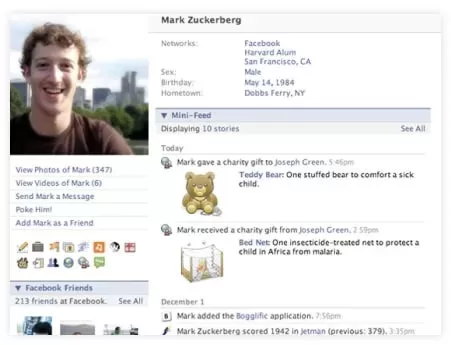
What is the history of paid social?
While we certainly offer the longer version of social media advertising strategy history here, paid social advertising dates back to the early 2000s, when social media platforms like MySpace and Friendster were just starting to gain popularity. However, it was not until the launch of Facebook Ads in 2007 that paid social started becoming a major player in advertising.
Since then, paid social has evolved tremendously, with the introduction of new platforms like Instagram, Twitter, and LinkedIn. These platforms have also introduced new ad formats and targeting options, such as sponsored posts, promoted tweets, and LinkedIn-sponsored content.
In recent years, paid social has become an essential part of many companies’ marketing strategies, with social media advertising spending projected to exceed $111 billion by 2022. With the increasing sophistication of ad targeting and personalization capabilities, paid social advertising is expected to continue to grow in popularity and effectiveness.
Understanding Social Media
Primary types of social media
Organic Social Media
Organic social media refers to the practice of sharing content on social media platforms without paying for advertising or sponsored posts. This can include posting updates, photos, videos, and other types of content on a brand’s social media page for free, with the goal of engaging with followers, building brand awareness, and driving website traffic.
Organic social media can be an important component of a brand’s social media strategy, helping to foster relationships with customers and build a strong online presence. However, it can also be challenging to stand out among the constantly growing volume of content on social media, which is why many brands also invest in paid social media advertising to amplify their reach and target specific audiences.
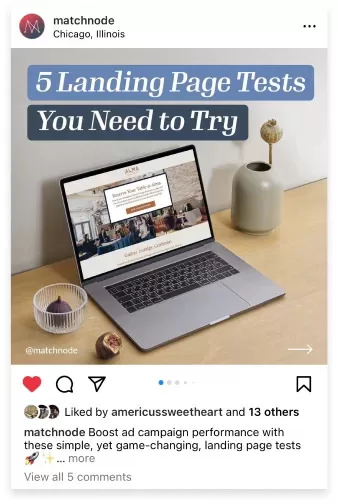
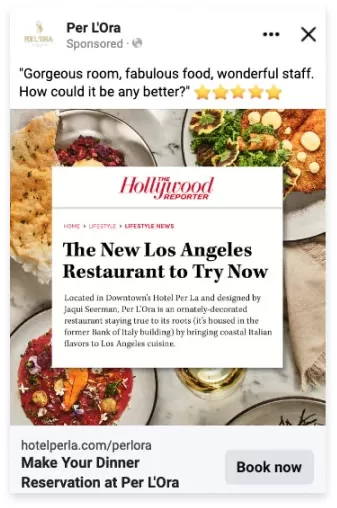
Paid Social Media
Paid social media refers to the use of ad spend dedicated to sponsored or promoted social media posts to reach a wider audience and increase brand visibility. It involves paying for advertising on platforms such as Facebook, TikTok, Instagram, LinkedIn, Pinterest, and others to target specific demographics or interests, and promote products or services. Paid social media allows businesses to connect with their target audience and engage them with relevant content, while also generating leads and sales.
The strategy usually involves creating engaging and visually appealing content, targeting audiences based on these interests and behaviors, and monitoring performance metrics to optimize campaigns. Paid social media is an important tactic in social media marketing, as it can help businesses to reach their audience more effectively, build brand awareness, drive traffic, and generate leads and sales.
Social Media Marketing
What is social media marketing?
Social media marketing refers to the process of promoting products or services on various social media platforms through a variety of techniques. These techniques may include organic social media efforts and paid social media campaigns. The goal of social media marketing is to increase brand awareness, drive traffic to a website or social media channel, and ultimately generate sales.
With platforms like Facebook, Instagram, Twitter, and LinkedIn, businesses can connect directly with customers, share valuable content, and build relationships. Organic social media involves creating engaging content and interacting with followers, while paid social media includes targeted advertisements to reach specific demographics. Social media marketing is crucial for brand visibility and driving results. It requires understanding the target audience, creating compelling content, and leveraging platform features.
Why does social media marketing matter?
Social media has revolutionized the way businesses approach advertising. With over 3 billion social media users worldwide, social media marketing has become an essential tool for targeting a vast audience. The rise of social media marketing has enabled brands to increase their visibility and reach potential customers more effectively than ever before.
With social media marketing, brands can tap into the immense potential of digital advertising and unlock new opportunities for growth and success in today’s competitive market. Both organic and paid efforts play a vital role in connecting with the audience, establishing an online presence, and gaining valuable insights.
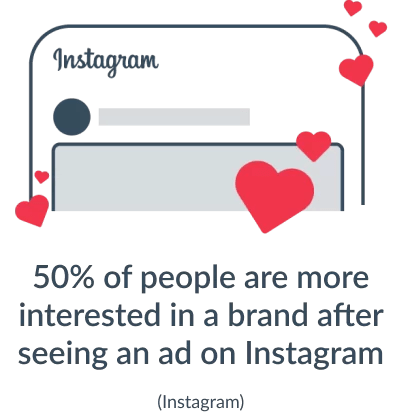
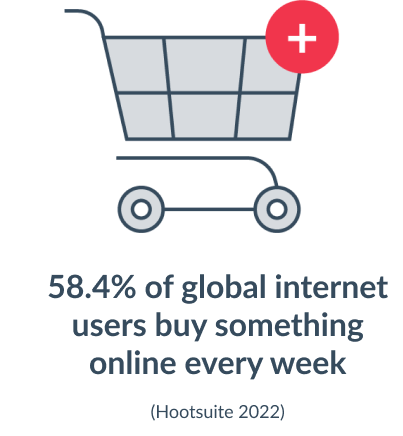
Organic Social vs. Paid Social
When to use organic social media vs. paid social?
Organic social media should be used for building brand awareness, fostering engagement, and promoting user-generated content. It’s a good approach to start building relationships with your target audience and creating a marketing strategy based on your social profile and content. It’s free, but it may take time for your efforts to yield results.
Paid social should be used when you have a budget to put your content and campaigns directly in front of your target audience and see results quickly. It’s good for promoting special offers, discounts, and deals. You can leverage paid social to generate leads, increase conversions, and drive sales to ultimately grow your business. Paid social campaigns require a budget but have a higher likelihood of getting instant visibility and results.
How to use organic social and paid social together?
Using organic and paid social media together can help to maximize social media marketing efforts.
Here are a few examples to use organic and paid social together:
- Use organic social to build brand awareness and paid social to drive conversions
- Use organic social media to promote your brand, sharing posts that highlight your company’s culture, values, and products. Paid social media can be used to reach a larger audience, drive website traffic or generate leads.
- Use organic social media to promote your brand, sharing posts that highlight your company’s culture, values, and products. Paid social media can be used to reach a larger audience, drive website traffic or generate leads.
- Leverage user-generated content on organic social and paid social
- Use the content your customers create on social media to generate ads that highlight their positive experiences. Also, use it as a source of inspiration for producing new content that appeals to your audience.
- Use insights from organic social to inform paid social campaigns
- Use data insights from your organic social media activity, such as which posts are getting the most engagement, to inform paid social strategies and ad targeting.
- Use data insights from your organic social media activity, such as which posts are getting the most engagement, to inform paid social strategies and ad targeting.
- Use paid social amplification to increase organic reach
- Boosting your organic social media presence with paid amplification ad campaign helps to increase your brand’s visibility. With precise targeting, your organic reach will extend to a much broader audience. When used together, organic and paid social media can enhance brand awareness, drive conversions, and increase engagement. Craft your content strategy for both organic and paid media in a way that complements each other to maximize the impact of your social media marketing efforts.
Benefits of Paid vs. Organic Social Media
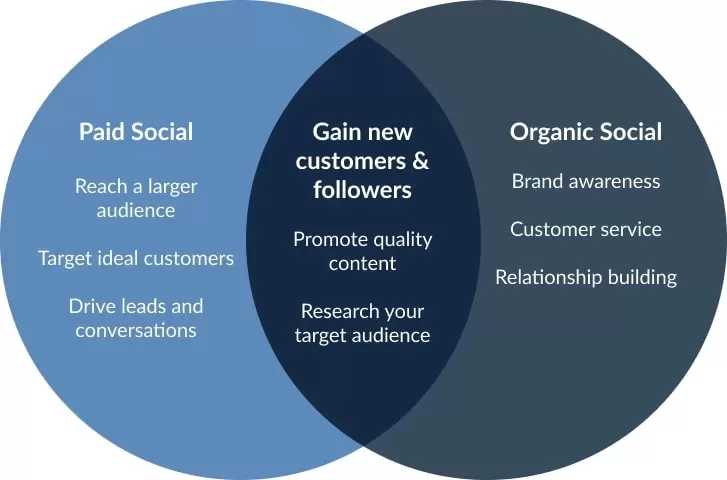
Paid Social Platforms
Best paid social platforms
What are the largest social media platforms by audience, time spent, and advertising revenue?
According to Statista, as of 2023, the largest social media platforms by audience size, ranked by the number of monthly active users (in millions), are:
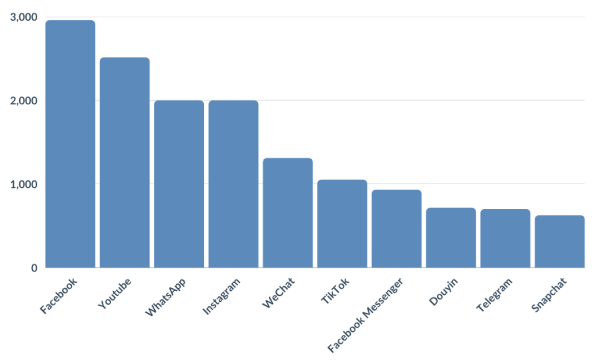
In terms of time spent, U.S. adults spend the most time on TikTok, with an average of 55.8 minutes a day. The platform has managed to surpass all its competitors in recent years, including Facebook and YouTube. In 2023, YouTube comes in second, with an average of 47.5 minutes spent per day, followed by Twitter with 34.1 minutes, Snapchat with 30.8 minutes, and Instagram and Facebook with just over half an hour each.
Strengths and Weaknesses of Major Social Media Platforms
Facebook ![]()
Strengths: Facebook is recognized for its vast reach and advanced targeting options that encompass interests, behaviors, demographics, and more.
Weaknesses: The dwindling organic reach on Facebook has necessitated businesses to pay for visibility. Also, the platform has seen a decline in younger users over the years.
Instagram ![]()
Strengths: Instagram thrives on visually-driven content and caters to a largely young demographic. It’s exceptionally effective for lifestyle, fashion, and food-related industries.
Weaknesses: Organic reach, much like Facebook, can be quite challenging. The platform also heavily relies on high-quality visual content, which may demand more resources to create.
YouTube ![]()
Strengths: Known as the world’s second-largest search engine, YouTube is the preferred platform for video content. It offers comprehensive targeting options and the possibility of reaching a large, engaged audience.
Weaknesses: The production of quality video content can be resource-intensive and time-consuming. The competition on the platform is also quite intense.
TikTok ![]()
Strengths: TikTok’s strength is anchored on its highly engaged younger audience and an algorithm that promotes rapid content virality.
Weaknesses: While it’s a fantastic platform for reaching younger demographics, it’s less effective for targeting older demographics. Content trends can be fleeting on this platform.
LinkedIn ![]()
Strengths: LinkedIn is the top platform for B2B marketing and professional networking, offering precise targeting based on professional criteria.
Weaknesses: Advertising on LinkedIn can be costlier than on other social media platforms, and it’s less effective for B2C marketing.
Pinterest ![]()
Strengths: Pinterest users actively turn to the platform for inspiration and ideas, making it a perfect platform for industries like home decor, fashion, and cooking.
Weaknesses: The platform’s user base is rather niche, which can limit reach. Also, it’s not as effective for certain industries.
Twitter ![]()
Strengths: Twitter is well-known for real-time updates and discussions, making it an ideal platform for news, public affairs, and customer service. Its hashtag functionality also supports content discovery. Weaknesses: The platform’s fast-paced nature can cause content to get lost in the noise. Additionally, its character limit might restrict comprehensive communication. Twitter also faces a challenge in user growth compared to other platforms.
Snapchat ![]()
Strengths: Snapchat offers a unique appeal to younger demographics with its creative and engaging content format. It’s well-suited for behind-the-scenes content, sneak peeks, and brand personality showcasing. Weaknesses: Unlike other social platforms, Snapchat’s content disappears after being viewed, which may limit prolonged engagement. It also lacks robust analytics tools and offers limited organic reach due to the lack of a traditional news feed.
Type of Content Best Suited for Major Social Media Platforms
Facebook: Facebook accommodates a blend of content types, including news, videos, photos, events, and live videos.
YouTube: This platform is exclusively for video content spanning across how-to guides, vlogs, commercials, and more.
Instagram: It’s best for visually appealing, high-quality images and short videos. Features like Stories and Reels have gained significant popularity.
TikTok: This platform specializes in short, creative, and engaging video content.
LinkedIn: Professional content, such as company news, industry articles, thought leadership pieces, and job postings, fits best on LinkedIn.
Pinterest: Visual content providing inspiration or instructional content. It’s the ideal platform for infographics.
Twitter: Best for timely, concise updates, news, and announcements. The platform is also excellent for real-time conversations, hashtag campaigns, and quick polls or surveys.Snapchat: Ideal for ephemeral, behind-the-scenes content, product sneak peeks, and creative, playful videos. Snapchat Stories and AR lenses are well-loved features on this platform.
How do the Biggest Paid Social Platforms Compare?
Paid social platforms are often used well together as part of an integrated marketing strategy, and how they compare to one another is the subject of a deep and nuanced blog post. At a high level, some pros and cons of the top digital advertising and social media platforms:
Facebook:
Strengths: Large user base, sophisticated targeting options, variety of ad formats, strong analytics.
Weaknesses: Increasing ad costs, privacy concerns, and less popularity among younger demographics.
YouTube:
Strengths: Second largest search engine, high user engagement, variety of ad formats, strong for video marketing.
Weaknesses: Requires video content, higher production costs, and less control over where ads appear.
Instagram:
Strengths: High engagement rates, visually focused, popular with younger users, strong influencer marketing potential.
Weaknesses: Limited to certain business niches (those that can produce high-quality visual content), less effective for B2B.
TikTok:
Strengths: Rapid growth, highly engaging short video content, popular with Gen Z, innovative ad formats.
Weaknesses: Demographics may not suit all businesses, relatively new advertising platform with less established best practices.
LinkedIn:
Strengths: Best platform for B2B marketing, professional user base, high-quality leads, good for content marketing.
Weaknesses: Higher cost per click, less effective for B2C, lower user engagement compared to other platforms.
Pinterest:
Strengths: Users actively seek inspiration and ideas (good for discovery), high spend per user, effective for certain industries like fashion, home decor, and recipes.
Weaknesses: Niche user base, requires high-quality visual content, less effective for B2B.
Snapchat:
Strengths: Popular with younger demographics, innovative ad formats like AR lenses, high engagement rates.
Weaknesses: Less effective for targeting older demographics, ad performance analytics could be improved.
Twitter:
Strengths: Offers real-time marketing potential, useful for customer service, news updates, and event promotions. Supports a variety of ad formats, including promoted tweets, accounts, and trends. Excellent for driving immediate responses or sparking conversation.
Weaknesses: Fast-paced nature of the platform could make it harder for ads to stand out. Limited character count may restrict the complexity of advertising messages. Growth and engagement rates are also comparatively lower than some other platforms.
Developing a Paid Social Media Advertising Strategy
Setting objectives via qualitative & quantitative research
To set objectives for a paid social media advertising strategy, both qualitative and quantitative research can be used to inform the decision-making process. Qualitative research involves gathering non-numerical data to understand the emotions, attitudes, and behaviors of a target audience. This can be done through surveys, focus groups, or social media listening. Qualitative research can help identify the interests and pain points of the target audience, which can inform the messaging and targeting of paid social media ads. The results can map to a customer persona that should be used to develop messages and creative assets that speak to the person’s desired benefits and outcomes.
Quantitative research involves gathering numerical data to measure performance and identify trends. This can be done through analytics tools that track website traffic, conversion rates, and engagement with social media posts and ads. Quantitative research can help set specific goals for the paid social media advertising strategy, such as increasing website visits or improving conversion rates.

Together, qualitative and quantitative research can help set realistic and measurable objectives for a paid social media advertising strategy. By understanding the audience’s interests and behaviors through qualitative research and tracking performance with quantitative research, a comprehensive and effective advertising strategy can be developed. Quantitative realities map to machine learning and AI that now work behind the scenes to deliver the right ad to the right person at the right time. Often, we reach a target cost per acquisition (CPA) or Return on Ad Spend (ROAS) that will be success markers for our social media ad campaigns.
Defining target audience
Understanding your target audience is the cornerstone of any successful marketing campaign, and this is particularly true for paid social advertising. You must first identify your ideal customer, considering variables such as age, gender, location, income, interests, and behaviors. These factors will guide your campaign, from ad design to platform selection.
Use tools like Facebook’s Audience Insights, Google Analytics, and your own customer data to build detailed audience profiles and customer personas. Remember, the more precisely you can define your audience, the more effective your campaign will likely be. Finally and most importantly, “creative is the new targeting”: with machine learning algorithms targeting broad audiences, thumb-stopping creative is the way to draw your customer out.
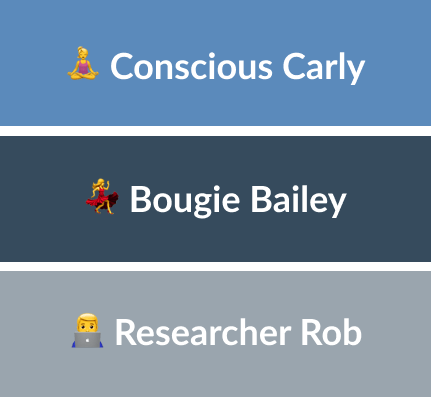
Choosing platforms
Selecting the right social media platform is critical in reaching your target audience effectively. Each platform has its own demographics and user behavior patterns. For example, Facebook and YouTube might reach a broader and more diverse demographic, while Instagram and TikTok cater more to younger audiences. LinkedIn is a good choice for B2B companies. Consider your audience’s preferences and habits, then choose platforms that align with them. You might also want to consider which platforms your competitors are using, and where your type of content resonates the most.
Creating the ads and content
Creating engaging ads and content is pivotal in attracting and retaining your audience’s attention. Your ads should align with your brand image, audience preference, and platform’s format. Include compelling visuals and headlines that incite curiosity or evoke emotion. Make sure your content communicates a clear value proposition and includes a clear call-to-action. Create multiple versions of your ad to test and see what works best. Also, remember to keep the platform’s ad specifications and user behavior in mind while creating your ad content. See our deep dive post on creative best practices for paid social ads.
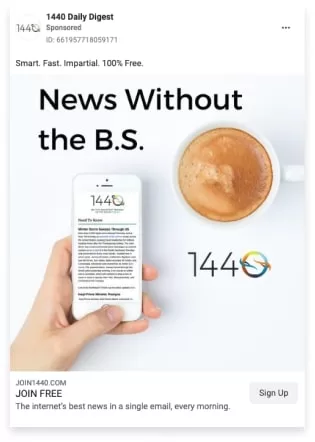

Building landing pages
The journey doesn’t end when a user clicks on your ad – the destination, typically a landing page, is just as important. A good landing page should be designed with conversion in mind. Keep the design clean and easy to navigate. The copy should be persuasive and aligned with the ad that brought the visitor there. Make sure the call-to-action is clear and straightforward. Keep forms simple to minimize friction. Load times are also crucial; a slow-loading page might lead to a lost potential lead. Lastly, it’s always a good idea to A/B test various elements of your landing page, such as headlines, colors, and call-to-action placements, to find out what drives the highest conversion rates.
What about paid social tech setup? Pixels, tracking, Conversions API, and more
To plan the paid social tech setup, there are several key components to consider, including pixels, tracking, first party data access, Conversions API, and more.
First, it’s essential to set up pixels on your website or landing pages. Pixels are small pieces of code that allow you to track user behavior and gather data for your advertising campaigns. You’ll need to install a Facebook pixel to track your Facebook and Instagram campaigns and a LinkedIn insight tag for LinkedIn campaigns.
Next, make sure your tracking is set up properly. This can include implementing UTM codes to track specific campaign parameters and monitoring your campaigns using Google Analytics or other tracking software. Ensure all tracking is set up properly to enable accurate attribution and analysis of campaign performance.
Finally, consider setting up Conversions API on Meta, which allows you to track offline events, such as in-store purchases or phone reservations, by sending data directly from your website or CRM to Facebook ads. This can help you gain a more comprehensive view of your campaign results and improve the accuracy of your attribution. Overall, planning a paid social tech setup requires a comprehensive approach to pixels, tracking, metadata, and more. By setting up these components properly, you can effectively measure and optimize your campaigns to achieve your advertising goals.
Setting Budgets
As previously mentioned, the budget plays a crucial role in the scale and reach of your ads. But let’s add more context to that. When you have defined your customer acquisition cost (CAC) and overall budget, you have a theoretical number of conversions (e.g., sign-ups, purchases) your campaign should generate. However, it’s important to scrutinize this number critically:
- Align with Business Capabilities: The projected conversions need to align with your business’s capacity. Can your customer service handle an influx of new customers? Does your stock level or service delivery allow for a significant increase in sales? Before investing in paid social, ensure that your business is ready to accommodate the projected growth.
- Rate of Learning: Paid social is a realm of constant learning and adjustments. It’s unrealistic to expect your first few ads to hit your target CAC straight away. Thus, a portion of your budget should be set aside for testing and learning. You’ll need to invest in different ad formats, targeting options, and platforms to find what works best. This means your initial CAC might be higher, but with constant optimization and learning, it should decrease over time.
- Sustainability: Consider the sustainability of your CAC in relation to the lifetime value (LTV) of a customer. If you’re spending more to acquire a customer than they bring in value over the time they remain a customer, you’ll be operating at a loss. So it’s crucial to balance your CAC with your LTV to ensure long-term profitability. Generally 3:1 is considered to be a good LTV to CAC ratio.
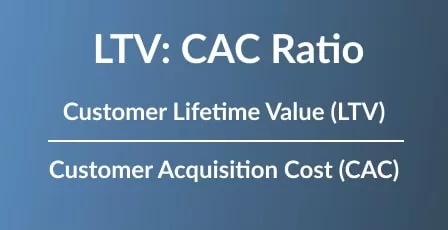
What are you optimizing your paid ads for?
The goal of optimization is to improve your ads’ performance, but you must understand what to optimize based on your objectives:
- Brand Awareness: If brand awareness is your goal, monitoring metrics like reach and impressions is critical. But look deeper — are these individuals within your target market? Are they likely to become customers in the future? General brand awareness is beneficial, but awareness among those most likely to convert is more valuable.
- Engagement: While likes, comments, and shares might increase, are these translating into valuable actions? Are engaged users visiting your website or signing up for your newsletter? Always connect engagement with further actions in the customer journey.
- Conversion Ads: If driving actions is your primary aim, ensure those actions are meaningful and contribute to your overall business goals. A user might download a guide (conversion) but never open it (no engagement or further action). Track your conversions further to understand the quality of these actions and the true ROI of your campaigns.
Remember, paid social advertising isn’t just about the immediate conversion; it’s also about building relationships with potential customers and guiding them down the sales funnel over time. So, your optimization goals should also reflect these long-term considerations.
There are different types of digital advertising formats that can be used to promote a brand, product, or service on social media platforms.
Some of the most common paid social ad formats include:
Image ads: These ads include a single image and a brief description of the product, service, or promotion.
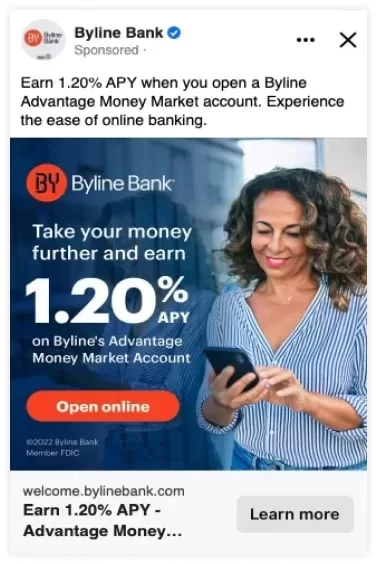
Video ads: These ads use videos to showcase the brand’s products, services, or promotions.
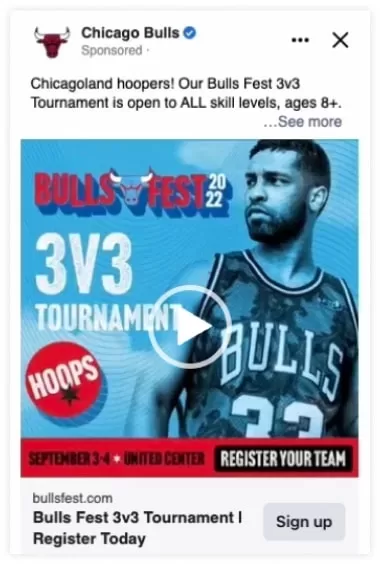
Carousel ads: These ads include multiple images or videos that can be swiped through to provide more information on the brand or product.

Sponsored posts: These ads are posts created in collaboration with influencers or content creators to promote the brand or product to their followers.

Stories ads: These ads appear in the stories section of social media apps and often include vertical videos or images.

Messenger ads: These ads appear within the messaging interface of social media platforms and can include messages, images, and videos. The choice of ad format will depend on the campaign objectives, target audience, and the platform being used.

Which Businesses and Industries are Best for Paid Social?
Paid social media advertising can offer potent opportunities for businesses across various sectors to reach, engage, and convert their target audience. Its effectiveness, however, shines particularly bright for certain industries characterized by specific customer behaviors, market size, and the type of products or services on offer.
Ideal for scaled B2C
Paid social typically demonstrates its true mettle for scaled business-to-consumer (B2C) companies. These businesses generally cater to diverse, expansive customer bases, which can be efficiently reached and segmented via social media platforms. Here are some specific industries that frequently witness substantial success:
Travel ✈️
Social media’s inherently visual nature makes it a perfect platform for travel businesses. They can utilize compelling imagery and immersive videos to inspire wanderlust in potential travelers. Recent data reflects a substantial surge in ad spend by the travel industry on social media, underlining its efficacy in this domain.
Pro Sports 🏈
Sports command a passionate and dedicated fan base. Fans typically engage deeply with content about their favorite teams or athletes, making them prime targets for social media ads.
Retail 🛍️
Retail businesses, especially those dealing with fashion, home goods, or consumer electronics, find great resonance with social media advertising. The industry’s visual and interactive elements, along with the platforms’ advanced targeting options, prove highly beneficial.
Banks and Financial Services 💰
Banks and financial institutions leverage paid social to raise awareness about their services, educate audiences about financial literacy, and provide customer service. By utilizing precise targeting, they can reach potential customers interested in their financial products.
Insurance and Healthcare 🧑⚕️
Both these industries use paid social media to educate audiences about their offerings, showcase customer testimonials, and highlight the importance of their services. They can also leverage social media for crisis communication and to demonstrate their commitment to customer service.
Restaurant Groups 🍔
Restaurant chains and groups utilize paid social for a multitude of purposes – promoting new menu items, highlighting customer experiences, advertising special deals, and more. The visual appeal of food and drink, combined with geo-targeting, makes paid social a particularly appetizing proposition for this sector.
Emerging success in B2B
While business-to-business (B2B) entities have traditionally relied more on channels like email marketing and content marketing, an increasing number are finding considerable success with paid social. LinkedIn, with its robust targeting capabilities, is an especially valuable platform for B2B advertising.
Applicable across business sizes
Businesses of all sizes, from local mom-and-pop shops to multinational corporations, can tap into the benefits of paid social media marketing. It can help small businesses establish local brand awareness and engagement, while larger corporations can exploit sophisticated targeting and personalization features to reach a vast, yet highly segmented, audience.
In sum, while paid social can be rewarding for almost any industry, achieving success hinges on understanding your specific audience, setting clear goals, and adopting a strategic approach to content creation and targeting.
Costs Associated with Paid Social
Running a paid social campaign involves various cost factors, each contributing to your overall marketing budget. These costs typically fall into two categories: ad spend (how much you’re willing to pay the social media platform to show your ads) and agency fees (if you’re using a professional agency to manage your paid social).
How much do social ads cost?
The cost of social ads can vary greatly depending on the platform, your industry, and even the time of year. On platforms like Facebook and Instagram, you can set your budget and bid amount, which directly impacts how often your ads are shown. LinkedIn, known for its professional audience, often carries a higher cost-per-click (CPC) than other platforms.
It’s also important to note that costs can fluctuate based on competition. For example, advertising during a peak shopping season like Christmas usually costs more due to increased competition for ad space.
While it’s difficult to provide specific figures without knowing your exact circumstances, industry averages can give you a ballpark figure. As of 2023, the average CPC on Facebook ranges from $0.50 to $2.00, whereas LinkedIn can average between $2.00 and $5.00 per click.
How much does a paid social agency cost?
The cost of hiring a paid social agency can also vary significantly, depending on the services they offer, their experience, and the scale of your campaigns. Some agencies charge a flat monthly fee, while others may charge a percentage of your ad spend or work on a performance-based model (where fees are tied to the results of your campaigns).
For a small to mid-size business, you might expect to pay anywhere from $1,000 to $10,000 per month for comprehensive paid social management services. Remember, you’re not just paying for ad execution; you’re also investing in their expertise, tools, strategy development, reporting, and ongoing optimization.
Understanding your agency’s pricing structure and value proposition
It’s essential to understand your agency’s pricing structure to appreciate the value they bring.
- Flat Fee: An agency might charge a flat fee for their services. This means regardless of your ad spend, the agency’s cost remains the same. This model is simple and predictable, allowing for easy budgeting.
- Percentage of Ad Spend: Some agencies charge a fee based on a percentage of your total ad spend. This means the more you spend on ads, the more the agency fee. While this can seem daunting, it can often align the agency’s goals with yours – the more successful your campaign, the more they earn.
- Performance-Based: Performance-based pricing aligns agency fees with specific campaign outcomes. This can be an attractive model because you pay more when you see results. However, make sure to clearly define what “performance” means and how it’s measured.
While costs are important, don’t overlook the value an agency brings to your paid social efforts. This includes strategy development, industry expertise, access to advanced tools, and ongoing campaign optimization. Always consider this value proposition when considering the cost of paid social.
Examples, Case Studies, and Creatives
While theory and strategy are crucial, they make the most sense when applied. Seeing real-world examples and case studies can be the most convincing part of understanding the impact and potential of paid social campaigns.
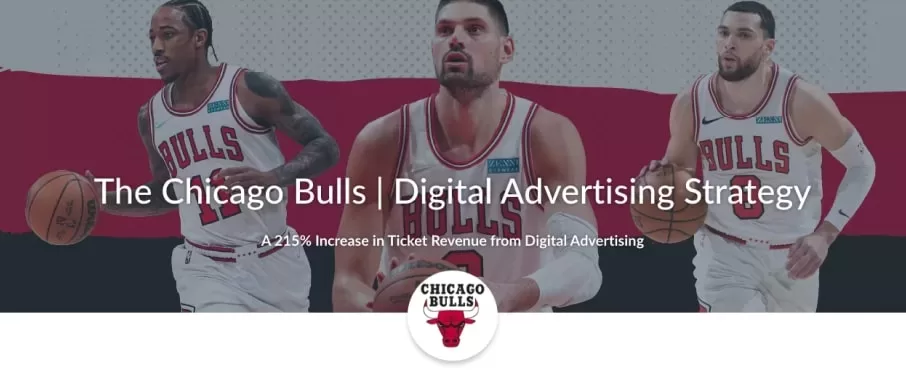
Examples of Successful Paid Social Ads
You can find examples of successful paid social ads across different industries. They often demonstrate effective targeting, creative appeal, and compelling calls-to-action. Here are a few notable ones:
- Brand Awareness: Example 1, Example 2, and Example 3 are excellent instances of campaigns that were designed to enhance brand visibility and recognition.
- Engagement: Example 4, Example 5, and Example 6 demonstrate how businesses can foster community and interaction on social platforms.
- Conversions: Example 7, Example 8, and Example 9 provide insights into driving action, from click-throughs and lead generation to actual sales.
Where to find paid social case studies
Paid social case studies offer in-depth insights into campaign strategy, execution, and outcomes, providing valuable learning opportunities.
At Matchnode, we pride ourselves on our transparent approach and results-driven focus, which you can see in our case studies. These provide an in-depth look at the work we’ve done with our clients, highlighting the strategies we’ve employed, the challenges we’ve overcome, and the successes we’ve achieved.
How to make creative for social ad campaigns
Creative is a crucial element of any social media ad. It’s often the first thing your audience will notice, and it can significantly impact the success of your ad. Here’s how to approach creative for your social ad campaigns:
- Understand Your Audience: Knowing your audience’s interests, preferences, and behaviors will help you create content that resonates with them. Use the data at your disposal to inform your creative strategy.
- Align with Your Brand: Ensure your creatives are consistent with your brand image and messaging. This helps increase brand recall and fosters trust with your audience.
- Experiment and Test: What works for one brand may not work for another. Try different types of content, formats, and styles. Always be testing and learning from your results.
- Leverage User-Generated Content: User-generated content can be highly effective, as it appears more authentic and relatable to your audience.
To get a sense of the creative capabilities of a paid social agency, have a look at the Matchnode creative portfolio. We’ve worked with clients in various industries to create engaging and effective ads that drive results.

Creativity drives 56%
of a campaign’s sales ROI
(Nielsen1)
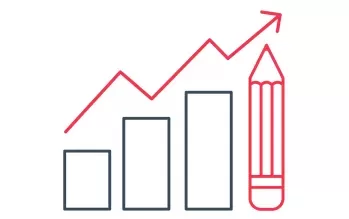
70% of a campaign’s success
is determined by the creative
(Google)
Pros and Cons of Hiring a Paid Social Agency versus Running Ads In-House
Pros of running ads in-house:
- Cost Savings: Running ads in-house can save the cost involved in hiring a paid social agency.
- Direct Control: In-house management allows for direct control over the messaging, targeting, and budget of advertising campaigns.
- Quick Turnaround: In-house advertising allows for quick changes and updates to campaigns without needing approval from an agency.
- Better Access to Business Insights: An in-house team has a greater understanding of the business, customer behavior, and can make better-informed changes to advertising strategy.
Cons of running ads in-house:
- Lack of Expertise: In-house teams may lack the skills and experience of paid social agencies.
- Team Burnout: Managing paid social can be a time-consuming task, causing burnout of in-house teams.
- Limited Resources: In-house teams may not have access to the latest technologies and tools available to paid social agencies.
- Risk: The responsibility for a campaign’s success or failure falls solely on the in-house team, which can be a significant risk.
Pros of working with paid social agencies:
- Expertise: Agencies have dedicated teams of experts with a significant amount of experience managing paid social campaigns.
- Diverse Resources: Paid social agencies have access to advanced technologies and tools which can provide a competitive edge.
- Collaborative Strategic Planning: Working with a paid social agency can result in better collaboration and strategic planning, leveraging cross-functional teams.
- Scale: Agencies can scale campaigns more effectively and efficiently across numerous channels and platforms.
Cons of working with paid social agencies:
- Investment Level: In-house advertising can be expensive, often requiring a significant amount of investment for a paid social agency’s services.
- Communication: There can be a lack of transparency and delay in communication, requiring constant follow-up.
- Distance from Business Insights: A paid social agency may not have a thorough understanding of the business, customer behavior, and long-term goals.
- Limited Control: Business owners may have limited control over campaign messaging and targeting when working with an agency.
Technical Setup for Social Media Advertising
Detailed setup process for different platforms
Technical setup for social media advertising involves configuring various tools and platforms to effectively track and optimize campaigns.
Here is a detailed process for setting up technical aspects in Meta (formerly Facebook), TikTok Ads, and Google Ads for paid social advertising:
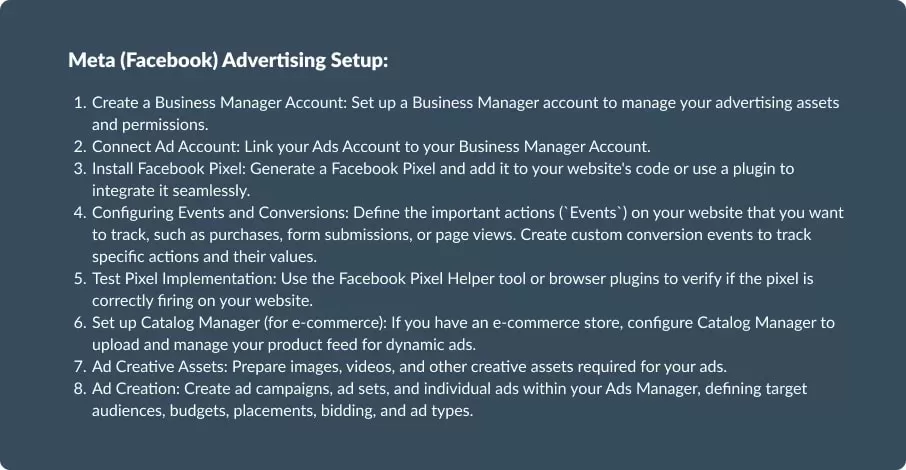
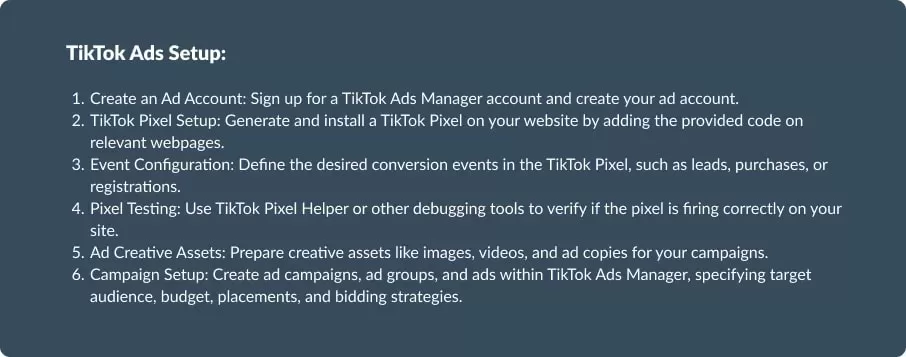
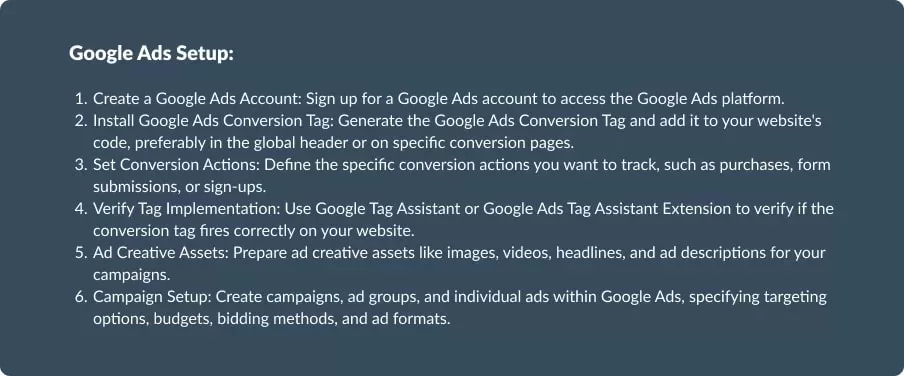
Conversions API: Alongside the pixel implementation, consider implementing the Conversions API (formerly Server-Side API) provided by each platform (Meta, TikTok Ads, or Google Ads). The Conversions API allows you to send server-side event data directly to the platforms, enhancing data accuracy, privacy compliance, and reducing reliance on pixel-based tracking. Please note that the specifics and detailed steps may vary, and it’s recommended to refer to each platform’s official documentation for the most accurate and up-to-date instructions.
Measuring the Success of Paid Social Campaigns
Key metrics for measuring paid social campaigns
- “cost per” [business result], also “cost per purchase”, “cost per lead”, “cost per account”, etc. This often is captured as ‘CPA’ (‘cost per acquisition’), but each company tends to pick its preferred acronym
- “return on ad spend” (‘ROAS’)
- upper funnel metrics like cost per click (CPC), CPM, or “cost per [whatever step in the funnel comes before your conversion]”
Tools for Measuring Paid Social Campaigns
Once your paid social campaigns are live, it’s essential to track, analyze, and measure their performance. This process helps you understand what’s working, what’s not, and what changes can be made to improve your results. Here are some key tools for measuring paid social campaigns:
GA4 and Google Analytics
Google Analytics, and its latest version Google Analytics 4 (GA4), are indispensable tools for tracking and analyzing web traffic. With the UTM parameters of your campaign URLs, you can track campaign performance across different metrics, including sessions, user behavior, and conversions. GA4 goes a step further by offering more sophisticated, event-based tracking and improved cross-device and cross-platform measurement.
Facebook Ads Manager and In-Platform Metrics
Facebook Ads Manager provides a plethora of metrics to evaluate your social media campaigns on Facebook and Instagram. It allows you to see key metrics such as reach, impressions, click-through rates, conversion rates, and much more. The platform also offers more granular data about user engagement, such as video views and social interactions (likes, comments, shares).
First-Party Data: Access and Dashboards
First-party data is the information you collect directly from your audience or customers. This data is highly valuable because it is the most accurate and relevant. Accessing this data can be done through your CRM or other customer data platforms that provide dashboards and data visualization tools. The insights derived from first-party data can help shape your ad content, targeting, and overall strategy.
Third-Party Tools
There are many third-party tools available that provide additional capabilities or offer different views on your data. Tools like Sprout Social, Hootsuite, and Buffer provide robust social media management solutions that include analytics features. Furthermore, social listening tools like Brandwatch, Mention, or Sprinklr can offer a wealth of qualitative data and sentiment analysis that go beyond the standard metrics. Selecting the right ones depends on your specific needs and the platforms where you’re running your campaigns.
Remember that data is only as good as the decisions it enables. Therefore, it’s not just about collecting the data, but about understanding it and using it to make informed decisions.
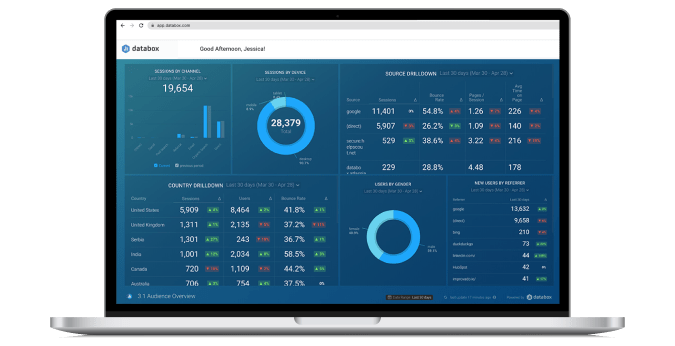
How to interpret these metrics
Evaluating the success of your paid social campaigns is more than just accumulating a wealth of data. It’s about distilling that data into clear, concise, and actionable insights. Here’s how to effectively understand and interpret these key metrics while emphasizing simplicity, focus, and direct alignment with your business economics.
- Adopt a Minimalist Approach to Metrics
- The key to effective measurement is not in analyzing every single metric available but rather focusing on a few crucial ones that truly matter to your business. We recommend concentrating on a maximum of three key performance indicators (KPIs). These KPIs should be most closely linked to your overarching business objectives and provide a broad yet accurate view of your campaign performance.
- The key to effective measurement is not in analyzing every single metric available but rather focusing on a few crucial ones that truly matter to your business. We recommend concentrating on a maximum of three key performance indicators (KPIs). These KPIs should be most closely linked to your overarching business objectives and provide a broad yet accurate view of your campaign performance.
- Understand the Supporting Metrics
- Each of your selected KPIs will have 3-4 supporting metrics that provide a more detailed view of your performance. For instance, if one of your KPIs is ‘Cost Per Acquisition’ (CPA), the supporting metrics could be ‘Cost Per Click’ (CPC), ‘Click Through Rate’ (CTR), or ‘Conversion Rate’ (CR). These metrics help you understand the mechanics behind your primary KPIs and offer insights into specific areas for paid social media ads campaign optimization.
- Each of your selected KPIs will have 3-4 supporting metrics that provide a more detailed view of your performance. For instance, if one of your KPIs is ‘Cost Per Acquisition’ (CPA), the supporting metrics could be ‘Cost Per Click’ (CPC), ‘Click Through Rate’ (CTR), or ‘Conversion Rate’ (CR). These metrics help you understand the mechanics behind your primary KPIs and offer insights into specific areas for paid social media ads campaign optimization.
- Embed Metrics Within Your Business Context
- Finally, it’s crucial to interpret these metrics within the context of your business economics. A low CPA or high Return on Ad Spend (ROAS) may initially seem impressive, but if those customers don’t generate substantial lifetime value (LTV), the overall business impact may be minimal. Therefore, always consider these metrics in conjunction with your broader business objectives and customer value.
- Finally, it’s crucial to interpret these metrics within the context of your business economics. A low CPA or high Return on Ad Spend (ROAS) may initially seem impressive, but if those customers don’t generate substantial lifetime value (LTV), the overall business impact may be minimal. Therefore, always consider these metrics in conjunction with your broader business objectives and customer value.
- Leverage Dashboards for Real-Time Tracking
- Modern technology enables us to track, analyze, and visualize data in real-time, providing instant insights into campaign performance. By creating a dashboard (we use and recommend Databox) that prominently displays your three key KPIs, you can always have your pulse on how your campaigns are performing. This at-a-glance view can help you quickly identify trends, spot issues, and make informed decisions on the fly. Dashboards can also simplify reporting and facilitate communication within your team and with stakeholders, ensuring everyone is aligned on the campaign’s progress and performance.
- Modern technology enables us to track, analyze, and visualize data in real-time, providing instant insights into campaign performance. By creating a dashboard (we use and recommend Databox) that prominently displays your three key KPIs, you can always have your pulse on how your campaigns are performing. This at-a-glance view can help you quickly identify trends, spot issues, and make informed decisions on the fly. Dashboards can also simplify reporting and facilitate communication within your team and with stakeholders, ensuring everyone is aligned on the campaign’s progress and performance.
- Embrace Artificial Intelligence (AI) for Data-Driven Decisions
- AI is transforming the world of paid social, helping advertisers understand their audiences better, personalize their messages, and maximize campaign effectiveness. When it comes to interpreting your metrics, use AI to your advantage. AI algorithms can help optimize your campaigns for value, effectively identifying the ads and strategies that are most likely to drive high-value outcomes. Embrace the possibilities that AI offers, from automation and optimization to predictive analytics and personalization.
Making Data-Driven Adjustments to a Paid Social Campaign
Being data-driven isn’t about reacting to every fluctuation in your metrics or chasing after the latest trend. It’s about making well-informed, strategic decisions that drive better outcomes for your business. Here’s how to make data-driven adjustments to your campaign:
- Understand the ‘Why’ Behind Your Data
- Before you make any adjustments to your campaign, you need to understand what’s causing the current performance. Look at the data and consider external factors like market trends or changes in consumer behavior. Are there sudden shifts in your metrics? Are there gradual trends? What could be causing them? By understanding the ‘why’ behind your data, you can make more effective adjustments.
- Before you make any adjustments to your campaign, you need to understand what’s causing the current performance. Look at the data and consider external factors like market trends or changes in consumer behavior. Are there sudden shifts in your metrics? Are there gradual trends? What could be causing them? By understanding the ‘why’ behind your data, you can make more effective adjustments.
- Prioritize Based on Impact and Effort
- Not all adjustments will have the same impact on your campaign’s performance. Some may lead to significant improvements with little effort, while others may require a lot of work for a minor boost. Use your understanding of the data to prioritize your adjustments based on their potential impact and the effort required.
- Not all adjustments will have the same impact on your campaign’s performance. Some may lead to significant improvements with little effort, while others may require a lot of work for a minor boost. Use your understanding of the data to prioritize your adjustments based on their potential impact and the effort required.
- Test, Don’t Assume
- Never assume an adjustment will have the desired effect. Whenever possible, conduct A/B tests to see how different strategies perform. For example, you might test different creative elements, audiences, or bidding strategies. The results of these tests can inform your adjustments and help ensure they improve your campaign’s performance.
- Never assume an adjustment will have the desired effect. Whenever possible, conduct A/B tests to see how different strategies perform. For example, you might test different creative elements, audiences, or bidding strategies. The results of these tests can inform your adjustments and help ensure they improve your campaign’s performance.
- Make Adjustments Gradually
- Drastic changes can make it difficult to understand which adjustments led to improvements or declines in performance. Instead, make adjustments gradually and monitor how your metrics change in response. This approach can provide more accurate insights into the effects of your adjustments.
- Drastic changes can make it difficult to understand which adjustments led to improvements or declines in performance. Instead, make adjustments gradually and monitor how your metrics change in response. This approach can provide more accurate insights into the effects of your adjustments.
- Learn and Iterate
- Data-driven marketing isn’t a one-time process. It’s a continuous cycle of learning and iteration. After you make an adjustment, continue monitoring your metrics to see how your campaign performs. Learn from the results and use that knowledge to inform future adjustments. This continuous improvement mindset is key to maximizing the effectiveness of your paid social advertising campaigns.

In conclusion, data-driven adjustments to your campaign can improve its performance and help you achieve your business goals. The key is to understand your data, prioritize your efforts, test your assumptions, make gradual changes, and continuously learn and iterate. By following these steps, you can optimize your campaigns and maximize your return on ad spend.
Best Practices for Paid Social Media Advertising
As we wrap up this extensive guide on paid social media advertising, let’s briefly touch on some best practices to guide you as you navigate through this vast landscape.
Being truly helpful to your audience
As with any form of marketing, your goal should be to offer value to your audience. This could be in the form of educational content, entertainment, or solutions to problems. Your ads should always align with your audience’s needs and interests.
Creating compelling creative
Creativity is the key to standing out in a saturated ad space. Invest time in crafting visually appealing, engaging content that resonates with your audience. Keep in mind the demographics and preferences of your audience while creating these assets.
How to target paid social (now)
In the age of machine learning and AI, modern targeting options have become more sophisticated and efficient. Rather than narrow targeting, we often recommend targeting broad audiences and allowing the algorithms to identify the ideal audience for you based on the creative’s performance. This approach relies heavily on the power of AI and leverages its ability to find the right people within a large group.
Scaling paid social media marketing
When it’s time to scale, do so strategically. Utilize machine learning and AI to your advantage. As you increase your spend and send success signals to the algorithm via pixels, you’re not just scaling your campaigns—you’re also educating the algorithm, making it more effective over time. This ensures that your campaigns are reaching a more targeted audience as they scale, making the scaling process smoother and more efficient.
Brand awareness, direct response marketing, and “performance branding”
Combine the strengths of brand awareness campaigns and direct response marketing to leverage “Performance Branding”. This strategy ensures you’re making an impression and driving measurable actions simultaneously.
Strategic positioning and message testing with paid social creative
Testing is an essential part of paid social. It allows you to identify what resonates with your audience. Experiment with different messages, ad formats, and creatives to find the most effective approach.
Strategic iteration
Finally, remember that paid social is a dynamic field. It’s crucial to learn from your experiences, iterate your strategies, and stay flexible to keep pace with the evolving landscape. Your strategy should always be evolving as you gain more insights about your audience and the performance of your campaigns.
Challenges and Criticisms About Paid Social
Paid social media advertising, while offering a myriad of opportunities, is not without its challenges and criticisms. Let’s address some common ones.
Common challenges
From keeping up with constantly changing algorithms and user privacy updates to creating standout content in a saturated market, the challenges can seem daunting. Other hurdles include measuring success accurately, setting optimal budgets, and navigating the complex ecosystem of multiple social platforms.
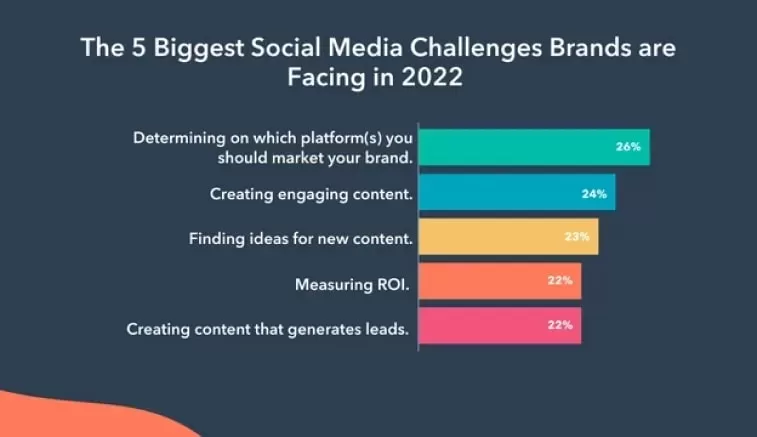
Valid concerns: privacy, centralization, misinformation, and protecting kids
- Beyond operational challenges, there are valid concerns about privacy, centralization, misinformation, and the safety of younger users on these platforms.
- Privacy: With increased scrutiny on data usage and privacy, users and regulators demand more transparency and control. Marketers must respect these demands and consider them in their strategies.
- Centralization: A small number of major platforms dominate social media. This centralization can lead to a lack of competition and create challenges for advertisers who want to reach diverse audiences.
- Misinformation: The rapid spread of false information can negatively impact social media’s effectiveness as an advertising platform. Advertisers need to ensure they’re part of the solution, not the problem, by upholding truth and transparency in their messages.
- Protecting Kids: Many social media platforms have been criticized for inadequate protection of younger users. Advertisers have a responsibility to ensure their content is age-appropriate and safe.
Addressing misconceptions
Misconceptions about paid social abound, from the idea that it’s only suitable for large businesses to the notion that results are immediate. Smaller companies can and do benefit from paid social, though it often requires a more strategic approach to compete with larger budgets. As for immediacy, while paid social can deliver quick wins, true success comes from sustained efforts over time, consistent testing, and refinement of strategies.
Another common misconception is that paid social can replace all other marketing efforts. While it is a powerful tool, it should be one part of a well-rounded marketing strategy. Remember, there’s no one-size-fits-all approach to marketing, and a successful strategy will leverage the strengths of multiple channels.
Ad spend breakdown
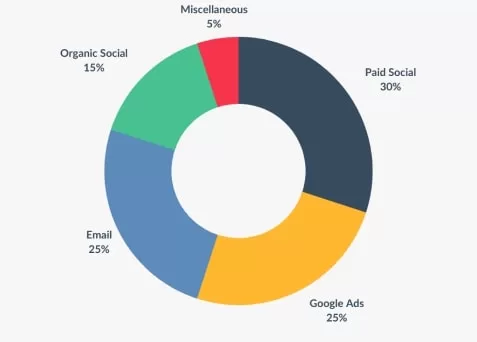
Future of Paid Social Media Advertising
The future of paid social media advertising is poised at the intersection of technology, consumer behavior, privacy concerns, and industry innovation. Recent changes and advancements provide some insight into what we can expect.
Personalization and AI
Personalization continues to be a significant trend, driven by advancements in AI and machine learning. This technology helps advertisers deliver more relevant content to audiences based on their preferences, behaviors, and interactions. This level of personalization enhances the user experience, increases engagement, and boosts the effectiveness of campaigns.
TikTok’s governmental challenges
TikTok, the platform that transformed short-form video content, is facing several governmental challenges globally, particularly concerning data privacy and national security. The platform’s future will undoubtedly be shaped by how these challenges are addressed and may set precedents for how social media platforms are regulated.
Twitter’s 2023 changes
Twitter, one of the oldest social media platforms, underwent significant changes in 2023, introducing new features aimed at enhancing user interaction and engagement. It also shifted towards a more community-focused approach. These changes may increase opportunities for advertisers to engage with niche audiences and foster more meaningful connections.
Threads: Meta’s new Twitter challenger
Meta (formerly Facebook), known for its continual innovation, has launched “Threads” as a new challenger to Twitter. This development could have considerable implications for the social media advertising landscape, especially if Threads gains a significant user base. As with any new platform, early adopters could gain an advantage. Finally, Threads has promised to include decentralized options, and it will be interesting to see how that is manifested, whether with integrations with Mastodon, Nostr, and other crypto-enabled social decentralized social networks.
Users owning their own data via Web3
The emergence of web3, where decentralized networks replace centralized ones, and users own their data, could radically transform the landscape of online advertising. Blockchain technology can facilitate this shift, giving users control over their data and potentially sharing in the revenue generated from its use. This could fundamentally alter the way we approach paid social, forcing a shift from broad data collection towards more direct and permission-based advertising strategies.
As we move forward, the most successful advertisers will be those who can adapt to these changes, innovate, and always place the needs and concerns of their audience at the heart of their strategies. The future of paid social is an exciting space to watch.



